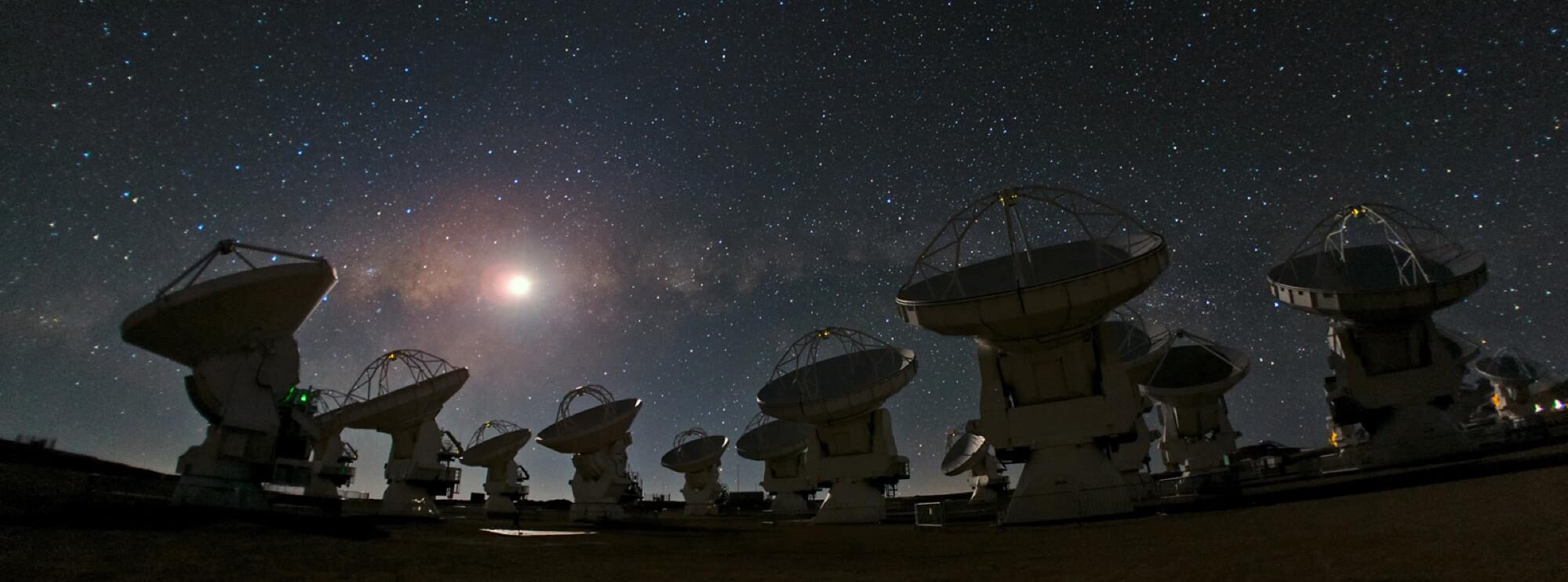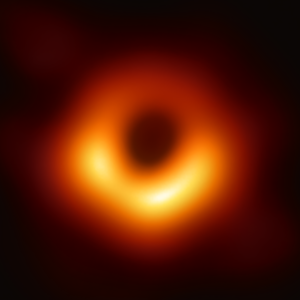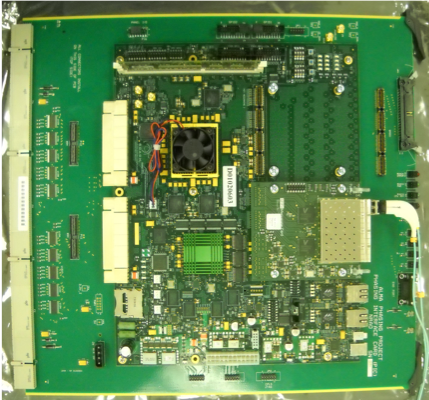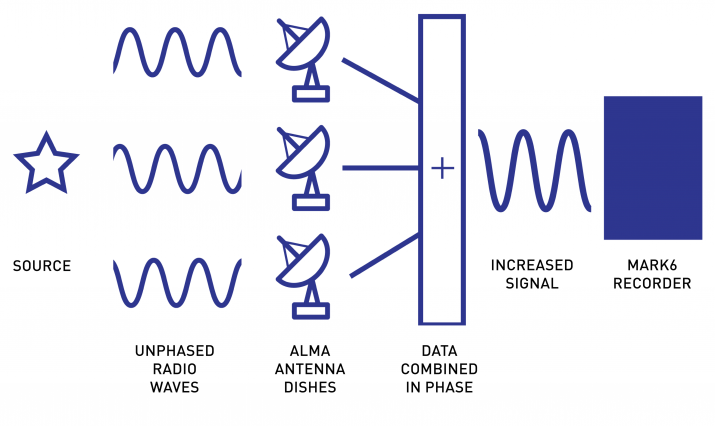
APP: ALMA Phasing Project

The ALMA Phasing Project (APP) is an international project led by Haystack Observatory to develop the hardware and software necessary to turn the Atacama Large Millimeter/submillimeter Array (ALMA) Observatory in northern Chile into the world’s most sensitive millimeter-VLBI station.
This capability was fundamental to the Event Horizon Telescope Collaboration’s ability to obtain the world’s first image of a supermassive black hole in 2019. A full description of the APP and the ALMA Phasing System is available at https://ui.adsabs.harvard.edu/abs/2018PASP..130a5002M/abstract.
APP partner organizations include:
- MIT Haystack Observatory (lead)
- Max Planck Institut für Radioastronomie, Germany (MPIfR)
- University of Concepción, Chile
- National Astronomical Observatory of Japan (NAOJ)
- National Radio Astronomy Observatory (NRAO)
- Institute of Astronomy & Astrophysics, Academia Sinica (ASIAA)
- Onsala Observatory, Sweden
- Harvard-Smithsonian Center for Astrophysics (CfA)
Funding for the APP was provided by the National Science Foundation Major Research Instrumentation Program, the ALMA North America Development Program, and international cost-sharing partners.
The APP was conceived to develop the technology needed to harness the extraordinary sensitivity of ALMA for VLBI science.
Motivation
The technique of VLBI at millimeter (mm) wavelengths enables scientists to achieve the highest angular resolution measurements of astronomical sources that are currently achievable (i.e., a few tens of microarcseconds). However, historically the applications of mm VLBI were constrained by the limited sensitivity of existing mm-wavelength telescopes, coupled with the relatively small number of telescopes around the world equipped for doing VLBI at these short wavelengths. Until recently, it was thus impossible to obtain images of astronomical sources using this technique. As a major step toward overcoming these limitations, the APP was conceived to develop the technology needed to harness the extraordinary sensitivity of ALMA for VLBI science.
When operated in its standard mode as a connected element interferometer, ALMA captures data from more than 40 individual antennas and uses the unique information from each pair of antennas in the array to reconstruct images of sources. However, by instead combining the signals from the individual antennas coherently (forming a so-called “phased sum”), ALMA can be transformed into the equivalent of a single large telescope with a collecting area equal to the sum of its individual dishes. Functioning thus as a giant “light bucket,” ALMA can in turn join networks of VLBI telescopes around the world to enable ultrahigh-resolution millimeter-wave observations. Such observations are able to achieve resolution as fine as a telescope the size of the Earth and with the addition of ALMA are an order of magnitude more sensitive than previously possible.
A major motivation for the APP was to enable imaging of nearby supermassive black holes on event horizon scales, as was successfully achieved for the first time by the Event Horizon Telescope Collaboration in 2019. However, as has been described in several white papers (e.g., Fish et al. 2013; Tilanus et al. 2014) the science case for a phased ALMA is broad and diverse.
How Does the ALMA Phasing System Work?

Hardware Components
To enable construction of the ALMA Phasing System, the APP installed four new major hardware components at ALMA:
- A hydrogen maser to serve as an ultra-precise frequency standard
- A suite of high-speed Mark 6 VLBI data recorders capable of recording data at a rate of 64 Gbps
- A set of 8 phasing interface cards (PICs) (placed within the ALMA baseline correlator) to serve as the VLBI backend and aggregate the phased sum signal
- An optical fiber link system to transport data from ALMA’s location on the Chajnantor Plateau at 5050 m (16,570 ft) elevation to the VLBI recorders Operation Support Facility at 2900m (9515 ft), 26 km (16.1 miles) away
Software Components
Software requirements for the APP included:
- Introduction of a new VLBI observing mode (VOM) to coherently phase the array and operate the VLBI recorders
- VEX2VOM software to translate a standard VLBI “VEX” file into an ALMA schedule block
The signal emitted by an astronomical source arrives at each ALMA antenna at a slightly different time, rendering the signals out of phase with one another at any given moment. If these raw signals were simply summed together, they would destructively interfere, resulting in an effective collecting area equivalent to only a single ALMA antenna.
To harness the full sensitivity of ALMA, the APP therefore needed to develop software to “phase up” (align) the signals arriving at the individual antennas to enable the formation of a coherent (phased) sum. This allows ALMA to effectively function as a single giant antenna with a collecting area equivalent to the sum of all of the individual dishes (see schematic). To keep the antennas in phase, the phasing software continues to refine and apply new phasing adjustments every several seconds during the course of an observation. The phasing software designed by the APP additionally provides an option to correct the phases of signals for the perturbations caused by water vapor in the Earth’s atmosphere.
The APP Phase 2 (APP2)
A second stage of the APP (known as the APP Phase 2 or APP2) began in 2018, funded by an ALMA North American Development award to MIT Haystack Observatory. The goal of the APP2 is to further enhance and expand the VLBI capabilities of ALMA to enable new types of science.
Some of the new capabilities being developed under the APP2 are:
- Enabling VLBI on weaker sources (through introduction of a “passive phasing” mode and improvements to the handling of the baseband delays)
- Extension of VLBI capabilities into the submillimeter (λ≈0.8 mm or ν≈345 GHz)
- Introduction of a spectral line VLBI mode
- Rollout of a pulsar observing mode (which uses ALMA’s VLBI machinery to enable pulsar observations).

The first of these new capabilities are expected to be available to the community during ALMA Cycle 8 starting in 2021.